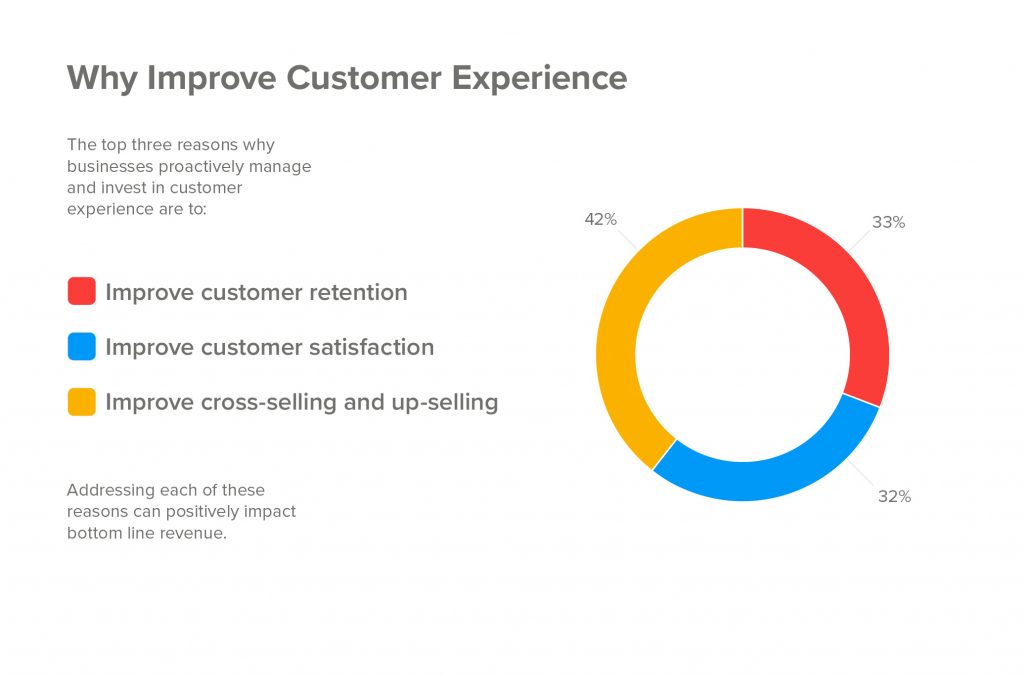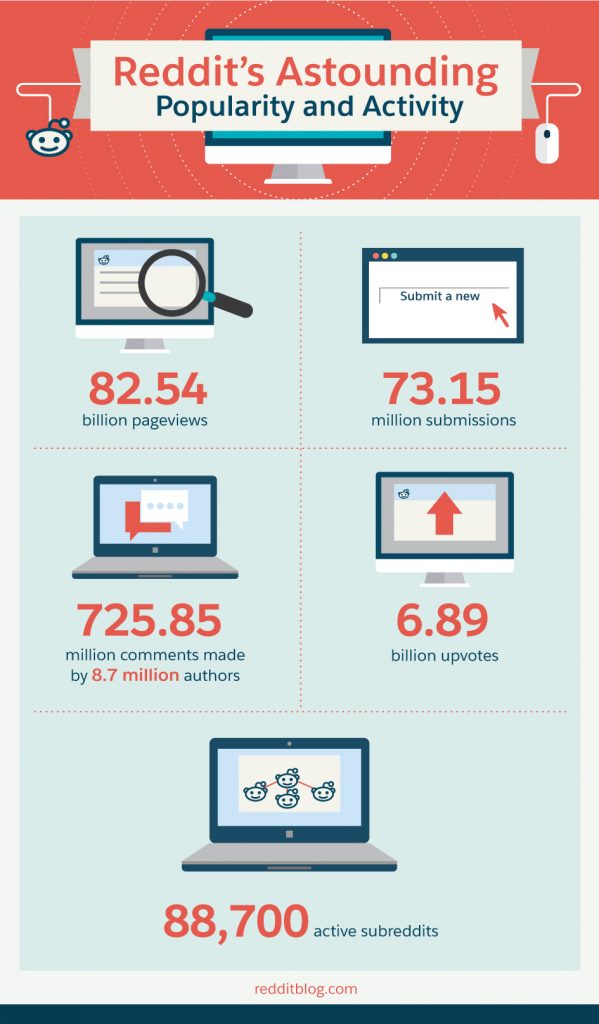In today’s customer-centric world, research is key to inform personalisation and shape an experience that converts (read: engagement, sale, etc.).
What’s more, gaining crucial insights puts you in a strategic position. You stay ahead of your competitors and most importantly, stay in tune with customer’s needs.
It’s no surprise that 40% of marketers drive their decision making after extensive research.
Bottom line? The more you know your customers, the better you can position yourself and your brand to serve them, but without research, you’ll be simply shooting arrows in the dark.
So in this article, I will break down customer research, it’s benefits and further share actionable strategies so you can connect better with your audience.
Let’s get started…
Contents
Why Is Customer Research Important?
Today’s consumers are bombarded with a variety of options—and they have limitless information at their fingertips. They’re empowered and want only the best.
Now, what’s ‘best’ can vary (think: price, USPs, etc.). However, what’s extremely powerful is how your brand connects to them, and in general, how their experience with your brand (aka customer experience).

Source: SuperOffice
And how do you create a memorable customer experience? Research.
For customers to build a favourable brand image of you in their minds, you have to get to know them better and then use the insights from your research to deliver a personalised customer experience they won’t forget.
In fact, a recent study by Super Office revealed that customer experience is predicted to overtake price and product as the stand out differentiator by 2020.
But it’s not just CX, the benefits of engaging in customer research go well beyond that and also include:
- Improve your brand positioning versus competitors
- Help strengthen your marketing and product strategy
- Eliminate weak points and reduce redundancies
- Stay in tune with customer sentiment ahead of new product launches
Bottom line? Marketing that’s executed without sound research is a pretty risky gamble as you’ll be implementing expensive campaigns that may not even work.

3 Customer Research Strategies to Know Your Customers
You might be thinking, “So all I have to do is get to know my customers better? That’s easy!” That’s where you’re wrong.
Although the process of gaining data and customer responses might seem easy, analysing the results and building actionable insights is where the challenge lies.
This is why building effective research campaigns that are best suited for your product and brand are important.
Read on to discover a few basic strategies you can start with and flesh out as per your brand’s needs.
1. Conduct Customer Interviews
Customer interviews are one of the primary and most data-heavy forms of customer research. [click_to_tweet tweet=”Gaining direct responses from your customers is naturally one of the best ways to obtain the answers you are looking for. ” quote=”Gaining direct responses from your customers is naturally one of the best ways to obtain the answers you are looking for. ” theme=”style3″]
Michael Aagaard, senior conversion optimiser at Unbounce, says, “In my experience nothing beats actually talking to your target audience. The insight you get is priceless, and no amount of quantitative data will let you reach the same level of understanding”.
Live/telephonic interviews beat customer surveys in this regard because they are personal. The interviewer’s skills deeply affect the response as well.

Source: Map & Fire
The money lies in your questions. They have to be well positioned in such a manner to get your customers talking.
Your customers should feel like they are having an easy-going conversation with you, not like they are in the middle of an interrogation.
For example, depending on your needs, you can structure your questions around:
- The use case for your product with each customer
- Their restrictions in making a purchase
- The phrases/image they attach to your brand
- Their inner motivations driving their needs/purchases
Tips to keep in mind when you are building your customer interview include:
- Be straightforward: your customers’ time is valuable and they appreciate honesty from your brand. Being upfront and genuine about what you want to learn from them will also build accurate responses.
- Be specific: what is the objective of your interview? What are you trying to learn? Outline your plan in a measurable manner – be it quantitative or qualitative – to avoid confusion during the interview and get reliable answers.
- Leave space for improvisation: scripting your calls or having guidelines to go by is helpful but shouldn’t limit you from reaching the full potential of an interview with a customer that goes a different way. Getting different and varied insights is just as important.
- Talk less, listen more: ask the right questions and then listen – show them that you’re fully committed and interested to hear their opinions. Customers share more when they feel they are being genuinely engaged with.
2. Leverage Social Media Forums
Social media is booming and overflowing with customer data and analytics. Depending on your customer demographic, you can target the relevant social media platforms to get to know your customers better.

Source: Netbase
Compared to other forms of market research, social media is also preferred due to the high ROI it offers, the mass tools available for analysis and the immediate results it offers.
No matter the platform you choose to use, be it Facebook Groups, Twitter hashtags or Quora forums, here are some generic steps you can follow to make sure you’re headed in the right direction.
1. Define your goal
What information are you looking for? Do you wish to gain behavioural insights into your customers or are you building buyer personas? Depending on your goal, the target demographic and type of data you choose to collect will differ.

2. Set data parameters
Quantitative data is measurable data and can come in the form of, for example, number of likes, retweets or shares, followers and engagements. Qualitative data represents emotive insights and can be collected through live sessions, comments and mentions.
3. Choose the right platform
Choosing the right channel for your analysis is important. Do you already leverage or connect greater with your customers on one social media channel over another? If so, collecting data from there may make more sense.
However, understanding the demographic options of the different channels is also important, as pictured below for Instagram’s usage in the US.

Source: Sprout Social
Reddit is also considered a ‘customer research goldmine’. A thriving community filled with valuable qualitative information, most marketers head over to the forums to do their research. It covers a number of demographics and is a good option for most customer research campaigns.

Source: Salesforce
4. Choose the right tools
There are a number of social media analytics tools available for your disposal online, like Hootsuite and Unamo but it’s important to choose the one that works best for you.
Using a project planning template to keep track of your campaign and research can also come in handy. Monday offers a variety of customisable templates to help you with the same.
5. Analyse your results and draw conclusions
Equipped with the right tools, you will be able to analyse the vast amount of data you collect from your social media analyses.
This will, in turn, help you to draw helpful conclusions and generate actionable insights about your customers.
It’s important to also stay objective and unbiased. Sometimes the insights you arrive at may not be the ones you were expecting or entirely favourable, but it’s good to take that feedback in your stride and develop your brand strategy accordingly to suit customer requirements.
3. Focus groups
Conducting a focus group is one of the most valuable sources of information into customer research. A little more on the challenging side but very effective if done right, focus groups can provide insightful perceptions that can help you further your business strategy.

Source: The Balance
How do you go about it?
Gather together a group of people, representative of your key demographic, and engage with them in topics of discussion that can drive the insights you’re looking to get.
Focus groups differ from interviews in the sense that they allow the members to interact and influence one another, observing the group mentality effect and providing a varied perspective in your customer research campaigns.
It’s important to conduct multiple focus groups with different participants to get as many insights as you can. They provide sizeable qualitative results and can bring out the inner emotive perceptions of prospective customers.

Tips to keep in mind for successful focus groups include:
- Ensure that the questions/topics introduced are not rigid but allow smooth flow of conversation and insights between the participants
- The moderator of the group should not influence the outcome but act as a proxy and coordinator to guarantee healthy discussions
- The environment the focus group is conducted in should be neutral to all participants and keep participants at ease
- The protocol for the focus group should be decided and planned for in advance to reduce inconsistencies
The success of a focus group can be easily swayed by the participants themselves and the surrounding factors.
That’s why it’s important to put in enough time and effort to build a reliable group to yield useful insights.
Bonus: Manage your Customer Research Campaign

Researching your customers is no easy feat. You’ll have to go through different channels, leverage different tools and if you’ve got a large target audience, manage a team of researchers. Basically, customer research is an intensive project and so, you’ll need to have the right plan and strategy before you even start.
So here are a few important areas to look into before starting your campaign:
- Firstly, make sure you know your target audience. After all, you don’t want to spend precious resources on the wrong target. I highly recommend creating buyer personas to help inform your marketing.
- Leverage S.M.A.R.T goal-setting framework to go about your project in an effective and efficient manner.
- Delegate management to an experienced project management guru and make sure to integrate your entire campaign with intuitive project organiser.
- Make sure you’ve allocated the necessary budget and resources before taking up the project as you don’t want to halt the project due to some bottleneck.
Bridge the Gap with Research
Conducting regular and insightful customer research is important to build a sustainable brand. [click_to_tweet tweet=”Customers are 97% more likely to be loyal to you if you show that you’re willing to implement feedback in a substantial way.” quote=”Customers are 97% more likely to be loyal to you if you show that you’re willing to implement feedback in a substantial way.” theme=”style3″](Source: GetVoIP)
In the current environment, customer needs and psyches are constantly evolving. To stay ahead of your competitors and on top of your own offerings, you have to keep an ear to the ground and know what your customers expect of you.
There is an abundance of data available at your fingertips. Using the right tactics to shape them into insights can make all the difference in bridging the gap between you and your customers.
Over to you:
How well do you know your customers? Do you leverage customer research strategies? If yes, what strategy has worked best for you?
Did this article have everything you were after? Still want more? Check out:
- Customer Avatar: Find and Reach Your Target Market
- Instagram Reach: How to Reach More users in 202 (9 Killer Strategies)
- The Most Complete Guide to Creating Winning Facebook Ads Anywhere!
- About the Author...







